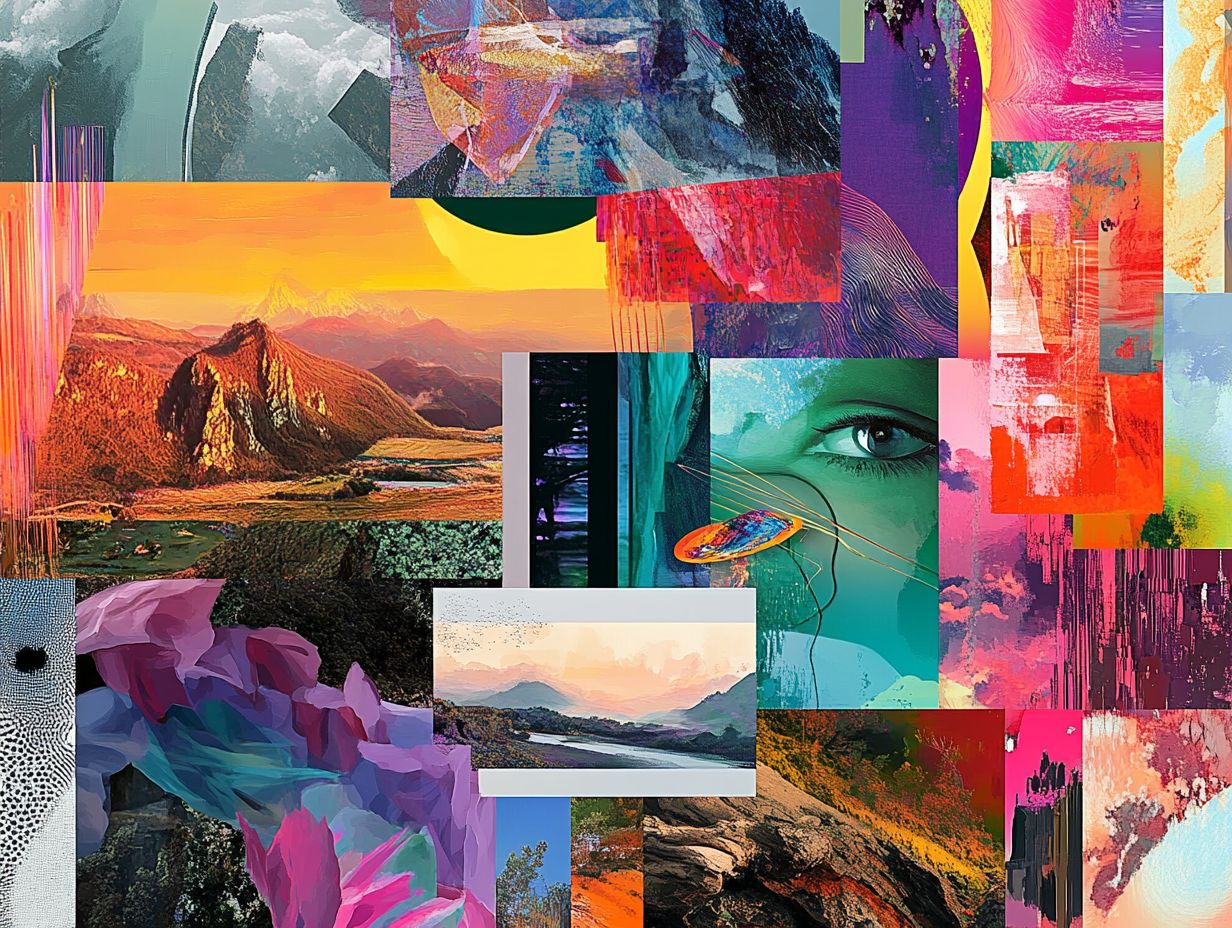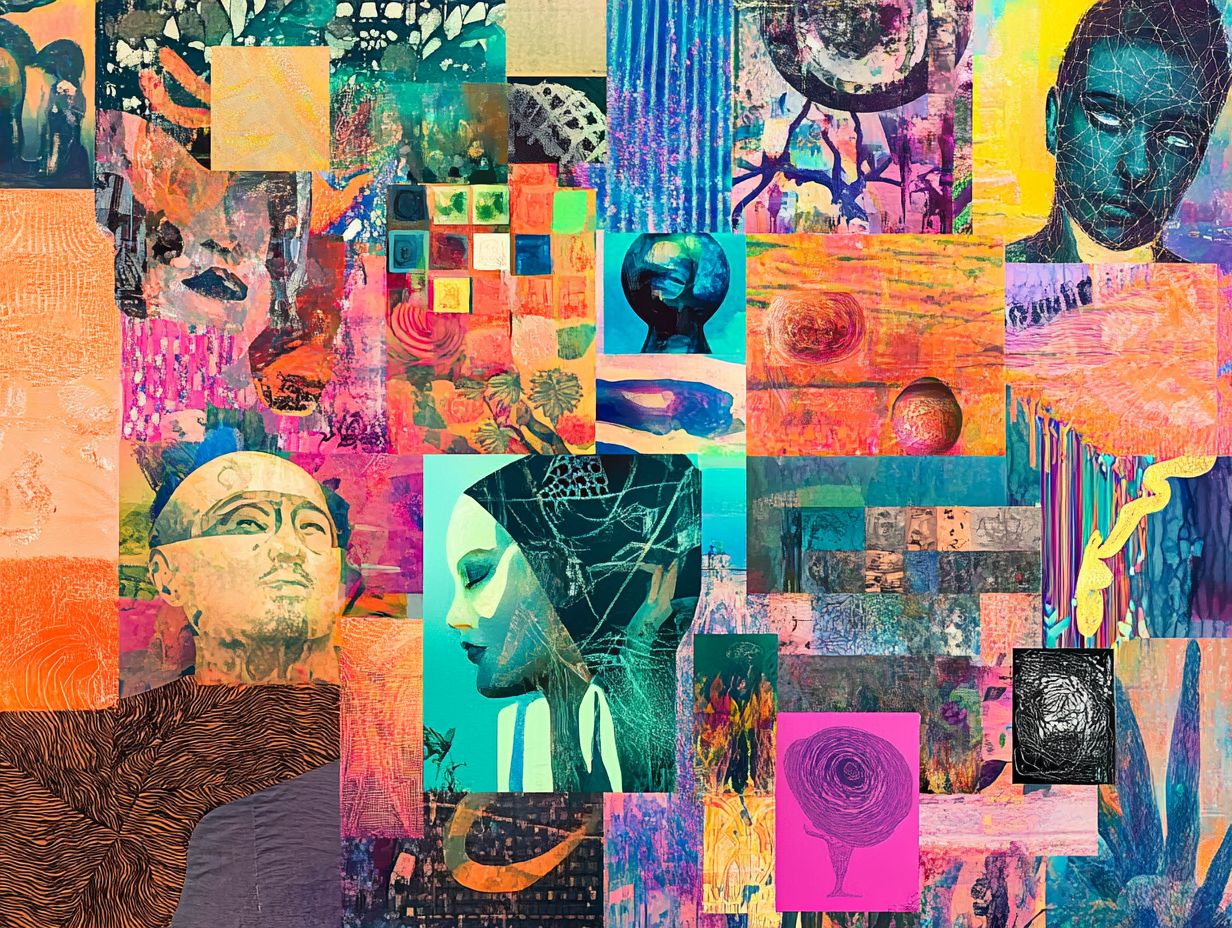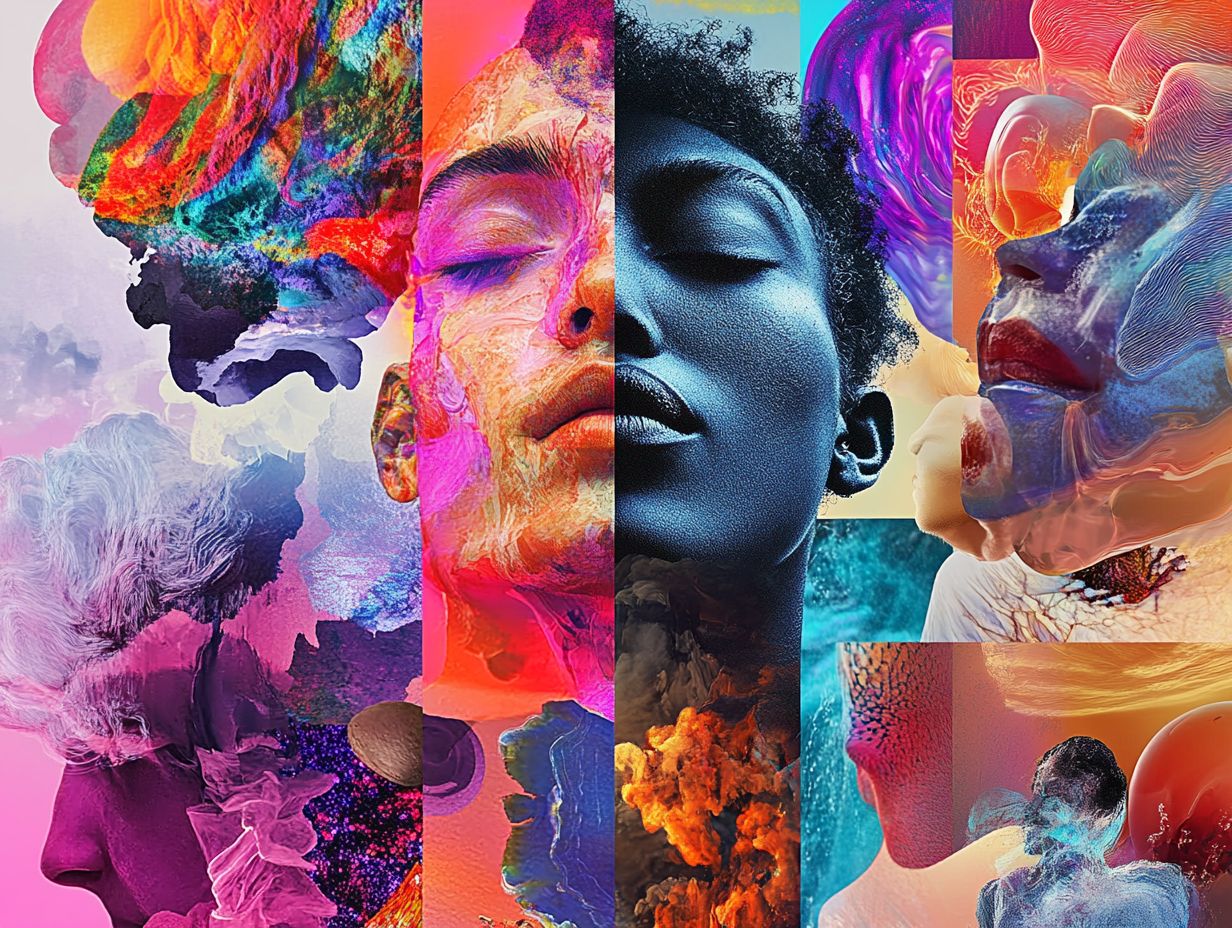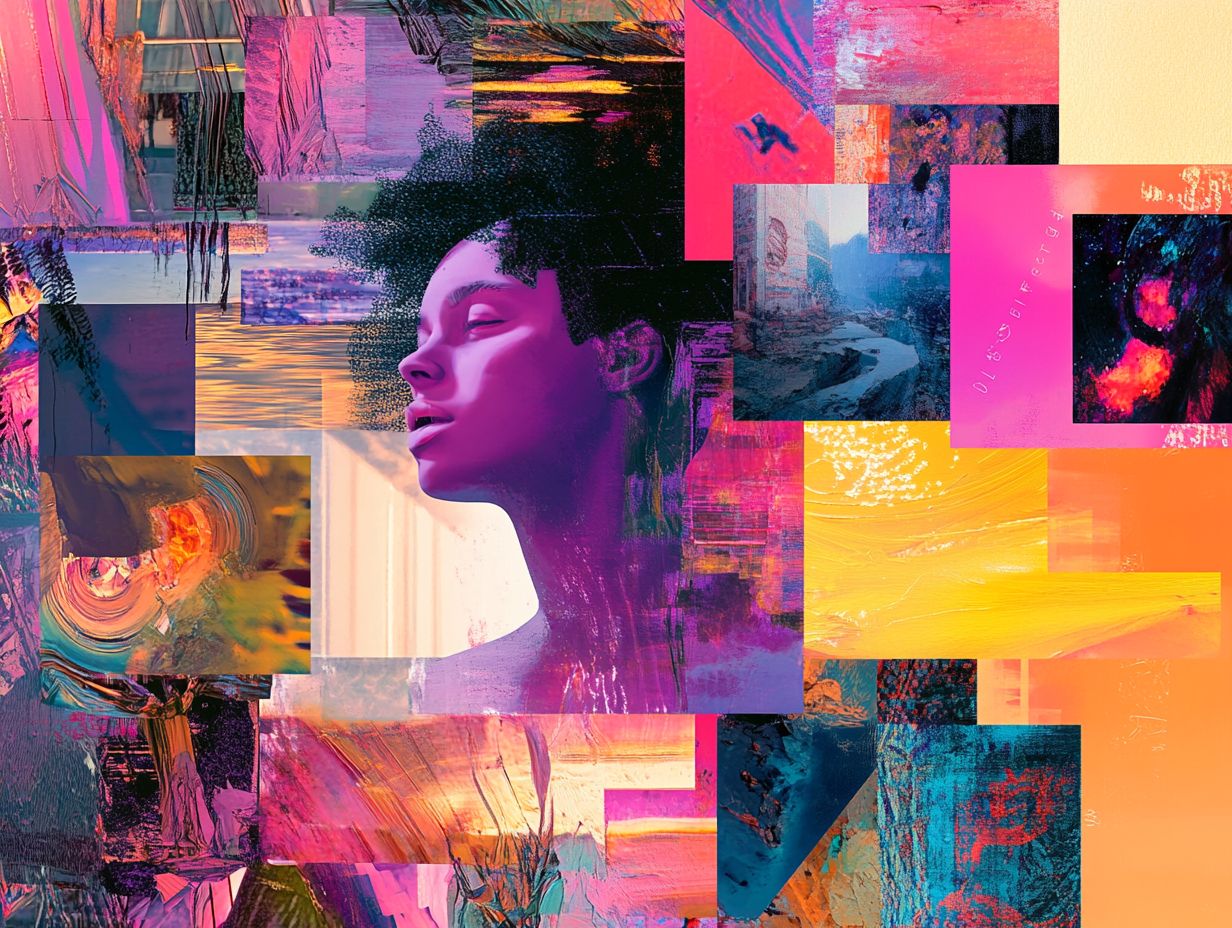The world of art is experiencing a significant transformation with the introduction of text-to-image art generators. These tools utilize advanced technology to turn written prompts into visual artworks, expanding the possibilities of creativity and efficiency in various industries.
This article examines how these generators function, their benefits, and reviews some of the leading options available today. It will also provide tips on selecting the right generator and maximizing artistic outcomes, helping individuals navigate this emerging landscape.
The Rise of AI Text-to-Image Art Generators

In recent years, AI text-to-image art generators have significantly changed the landscape of digital art creation, allowing both artists and non-artists to generate impressive visuals by simply inputting descriptive text prompts.
Tools such as DALL-E, Midjourney, and Stable Diffusion have streamlined access to generative art by utilizing advanced neural networks and machine learning algorithms to create unique artworks that showcase various artistic styles and visual representations.
Understanding the Technology
To understand the capabilities of AI text-to-image art generators, it is important to recognize the underlying technology, which utilizes complex neural networks and machine learning processes to produce high-quality images based on user-defined text prompts.
These algorithms analyze extensive datasets, extracting patterns and features that influence the overall visual composition. By employing techniques such as deep learning and convolutional neural networks (CNNs), the software continuously improves its understanding of how various attributes—such as color, shape, and texture—interact in different contexts.
This analytical method not only enhances image quality but also significantly boosts resolution, enabling the creation of images that are detailed and visually appealing. As these systems advance, they become more skilled at generating realistic interpretations of abstract concepts, highlighting the significant role of machine learning in the field of creative digital art.
Benefits of Using AI Text-to-Image Art Generators
AI text-to-image art generators provide numerous benefits that improve efficiency and creativity in the digital art creation process.
They enable artists, graphic designers, and art enthusiasts to customize their artwork easily and precisely through user-friendly interfaces and innovative art applications.
Efficiency and Creativity
One of the notable advantages of AI text-to-image art generators is their ability to streamline the creative process through automated art creation. This technology enables real-time generation, facilitating collaborative art projects and enhancing creativity.
This innovation reduces the time artists spend on initial concept development and creates a platform for interaction and inspiration among multiple creators. By providing immediate visual feedback, these tools allow artists to experiment freely, which can lead to unexpected breakthroughs and a deeper exploration of artistic styles.
The integration of various artistic perspectives promotes a unique environment for collaboration, transforming individual visions into collective works of art.
The outcome is a dynamic interaction between technology and imagination, which not only improves productivity but also enhances the quality of creative output, while maintaining the fundamental values of artistic expression.
Applications in Various Industries

The applications of AI text-to-image art generators extend across various industries, enabling the creation of visual content that promotes art exploration and digital illustration, while also inspiring innovative designs in areas such as marketing, entertainment, and education.
In marketing, brands use these tools to create unique visuals that attract consumers’ attention, enhancing advertisements and social media posts with engaging imagery. For example, a fashion company can generate striking lookbooks tailored to their latest collection, while filmmakers can leverage AI-generated concepts to visualize scenes before production, improving storytelling efficiency.
In education, institutions utilize these visuals to create engaging e-learning materials, effectively breaking down complex concepts through imaginative graphics, which makes learning more interactive and enjoyable.
The use of AI-generated art not only enhances creative expression but also streamlines workflows across these sectors, highlighting its transformative potential.
Top AI Text-to-Image Art Generators in the Market
The best AI text-to-image art generators available include tools such as DALL-E, Midjourney, and Stable Diffusion.
Each of these tools offers unique features and capabilities that contribute to an enhanced user experience when creating impressive visuals.
Overview and Comparison
When comparing DALL-E, Midjourney, and Stable Diffusion, it is important to examine their unique art generation techniques and capabilities for image manipulation, offering users a variety of options for creating customized visuals.
These tools each feature distinctive attributes that address different artistic needs, whether someone is looking for realistic images, abstract concepts, or surreal interpretations. DALL-E is notable for its ability to generate intricate images based on textual prompts, while Midjourney is recognized for producing stunning visuals that often feature vibrant color palettes and a distinct artistic style. In contrast, Stable Diffusion is effective at generating high-resolution images with customizable styles, allowing users to adjust various parameters to achieve their preferred results.
Each tool enhances creativity and provides a user-friendly interface, making the art generation process accessible and enjoyable for both beginners and experienced artists.
How to Choose the Right AI Text-to-Image Art Generator
Selecting an AI text-to-image art generator requires careful consideration of various factors, such as the preferred art direction, available user input options, and the quality of the images produced.
This ensures that the generator aligns well with individual creative goals.
Factors to Consider

When evaluating image generation software, it is important to consider several key factors, including the range of available art styles, the intuitiveness of user interfaces, and the resolution of outputs. Each of these aspects can influence the creative process.
The variety of art styles available can enhance an artist’s ability to explore and experiment with different aesthetics, resulting in more unique and captivating creations. It is also essential to evaluate how well these tools accommodate different artistic preferences, allowing users to switch easily between styles.
The user interface is significant; a seamless and intuitive experience enables creators to focus on their artistic vision without being hindered by complex navigation.
Resolution affects the detail and clarity of the generated images, making high-quality outputs important for professional use. When selecting AI tools, it is advisable to look for features such as:
- Customization options
- Community feedback
- Support resources
As these elements can greatly contribute to achieving the desired artistic results.
Tips for Using AI Text-to-Image Art Generators Effectively
To achieve the best results when using AI text-to-image art generators, it is important to utilize effective prompt engineering techniques while being aware of common mistakes that could impede the image generation process and impact overall visual creativity.
Maximizing Results and Avoiding Common Mistakes
Maximizing results in the art generation process involves understanding the capabilities of various artistic tools and employing effective strategies that enhance creativity while improving the user experience across different image generation models.
It is important to start with clear, descriptive prompts that guide the software in interpreting the user’s vision, rather than leaving them open to ambiguity. For example, incorporating specific styles and color palettes can greatly influence the generated artwork.
Users should also become familiar with the settings and features of their chosen platform, as many offer options for fine-tuning results, such as modifying aspect ratios and adjusting artistic filters.
Common pitfalls include vague instructions or overloading prompts with excessive details, which can confuse the model and result in unsatisfactory outputs. By avoiding these mistakes and focusing on clarity and intention, the quality of the artwork can improve significantly, leading to a more satisfying creative process.
Frequently Asked Questions
What are the best AI text-to-image art generators?

The best AI text-to-image art generators are advanced programs that use artificial intelligence and deep learning algorithms to generate images based on text input.
How do AI text-to-image art generators work?
AI text-to-image art generators use a combination of natural language processing and computer vision techniques to analyze text input and generate an image that corresponds to the description provided.
What makes a good AI text-to-image art generator?
A good AI text-to-image art generator should have a large dataset of high-quality images and an advanced deep learning model to accurately translate text input into visual representations. It should also have customizable options for users to adjust the output image style and content.
Can I use AI text-to-image art generators for commercial purposes?
It depends on the specific AI text-to-image art generator and its terms of use. Some generators may allow for commercial use, while others may restrict it. It is important to carefully read the terms and conditions before using an AI text-to-image art generator for commercial purposes.
Are there any free AI text-to-image art generators available?
Yes, there are many free AI text-to-image art generators available online. However, the level of quality and features may vary among these generators. It is important to do research and read reviews before choosing a free AI text-to-image art generator to use.
What are the potential applications for AI text-to-image art generators?
AI text-to-image art generators have a wide range of potential applications, including creating personalized artwork, generating visuals for marketing and advertising campaigns, and even aiding in the development of virtual and augmented reality experiences.
